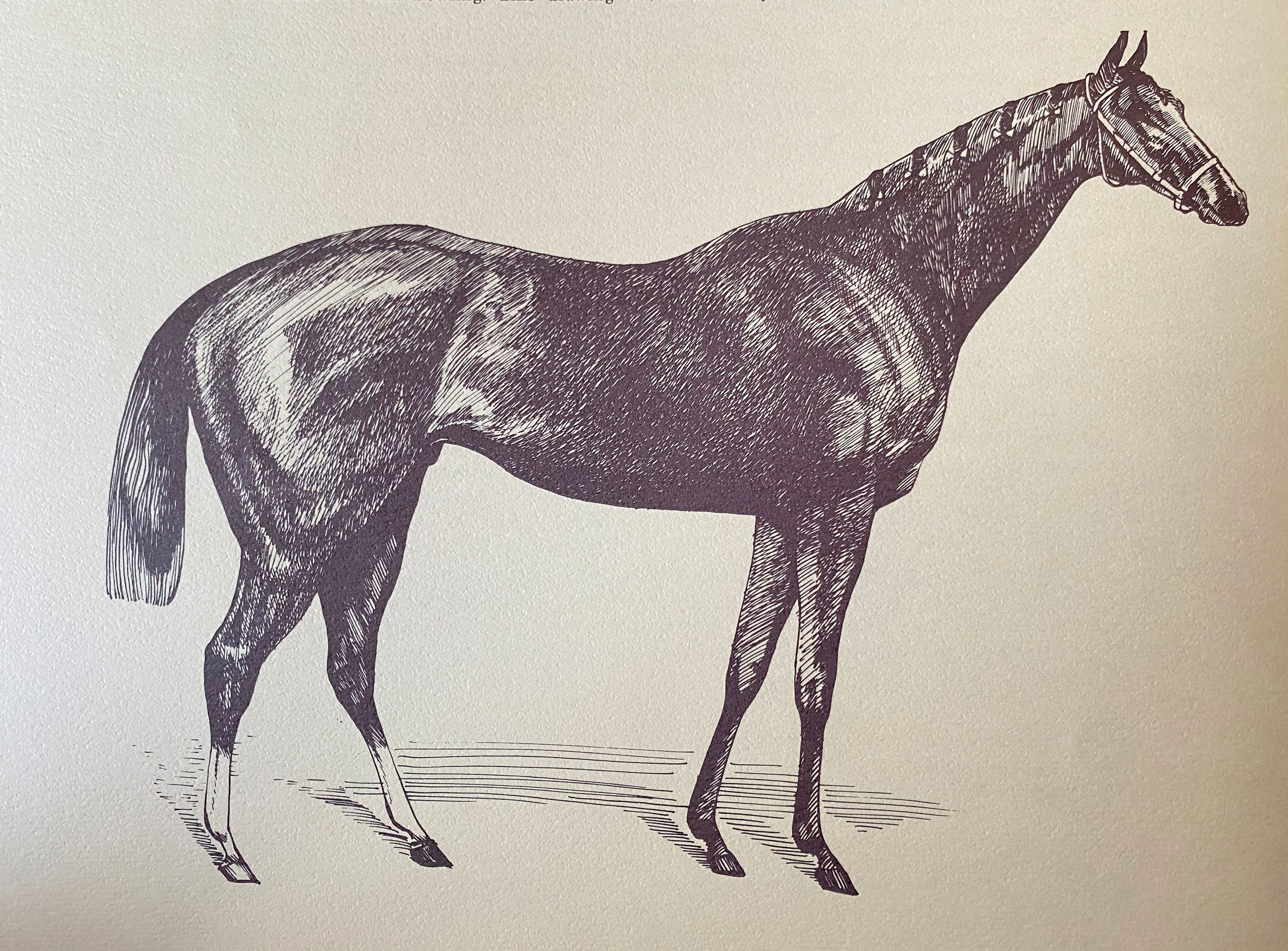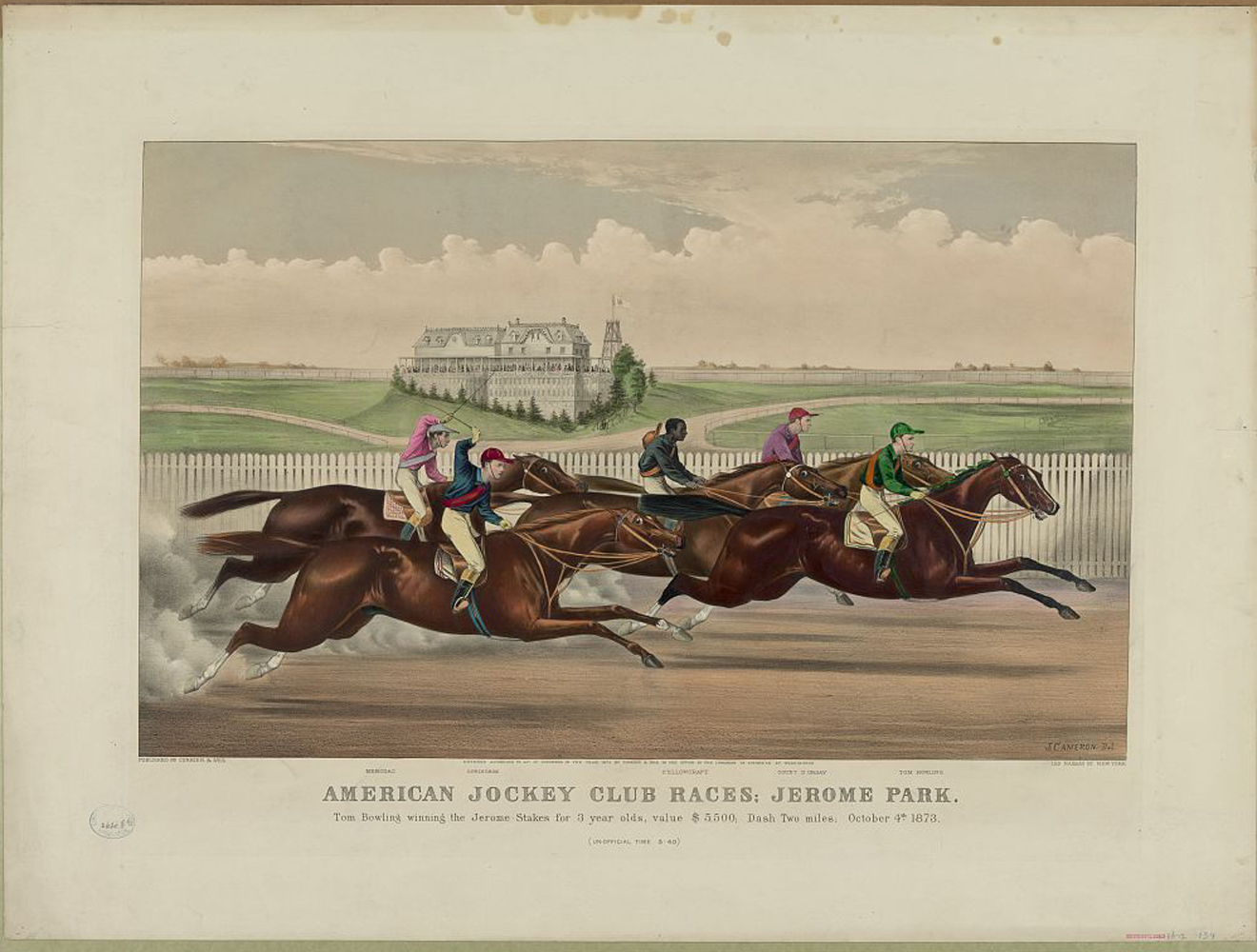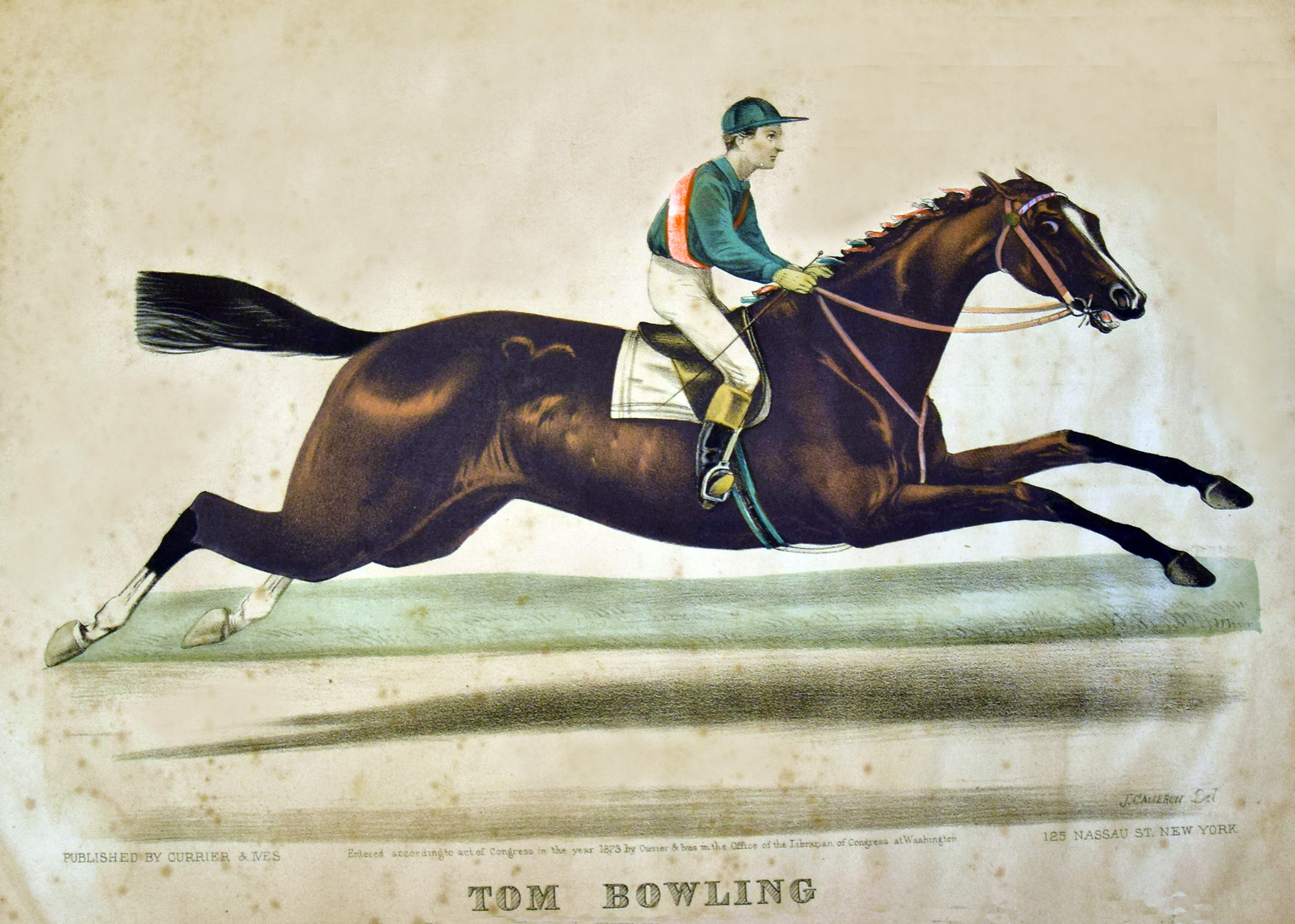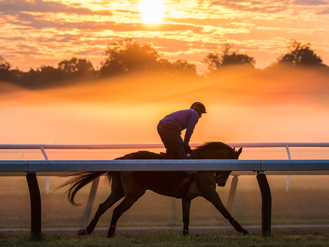Tom Bowling (KY)
Tom Bowling was a cantankerous and intimidating specimen, known for biting and kicking the humans who grew unenthusiastic in their attempts to handle him. But when the large and dangerous son of Lexington ran, he was poetry in motion with brilliant talent that overcame his quirkiness and distaste for those who tried to manage his hostility.
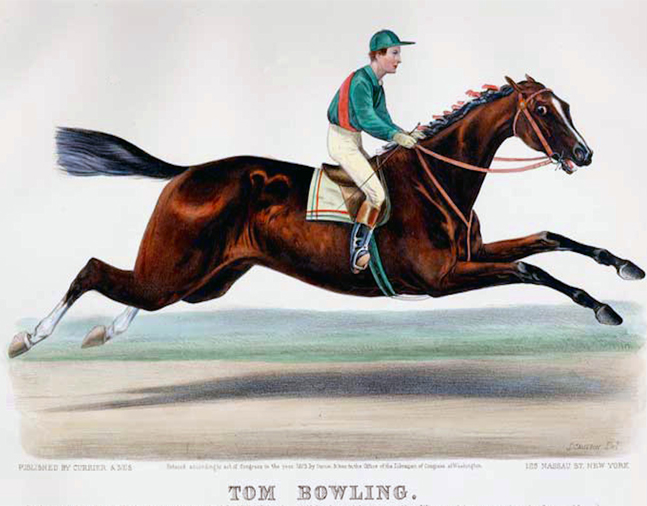
2020
1870
Lexington
Lucy Fowler
Albion
H. P. McGrath
H. P. McGrath
Ansel Williamson
1872-1874
$36,350
Racing Record
17
Starts
| 1872 | 5 | 3 | 2 | 0 | $5000 $5,000 |
| 1873 | 8 | 7 | 1 | 0 | $26650 $26,650 |
| 1874 | 4 | 4 | 0 | 0 | $4700 $4,700 |
Biography
Tom Bowling was a cantankerous and intimidating specimen, known for biting and kicking the humans who grew unenthusiastic in their attempts to handle him. But when the large and dangerous son of Lexington ran, he was poetry in motion with brilliant talent that overcame his quirkiness and distaste for those who tried to manage his hostility.
Bred in Kentucky by notorious gambler H. P. McGrath — who conceitedly named his Bluegrass farm McGrathiana — Tom Bowling was in Lexington’s 1870 crop. He was out of the Albion mare Lucy Fowler, who also produced McGrath’s 1875 Belmont Stakes winner, Calvin, and stakes winners R. B. Connolly and Aaron Pennington, among others.
A bright bay with a narrow blaze and stockings on his hind legs, Tom Bowling was put into the care of trainer Ansel Williamson, a former slave who would eventually be elected to the Hall of Fame. From the beginning, Williamson had his hands full with his grumpy charge, but the respected trainer was able to extract the best of Tom Bowling despite the regular drama.
Tom Bowling lost his career debut by a head in the Hopeful Stakes at Monmouth Park on July 2, 1872, then lost by a neck in the July Stakes two days later. Shipped to Saratoga for the Flash Stakes, Tom Bowling figured things out and broke his maiden with a two-length victory in the $500-added event. Sent back to Monmouth, he romped in winning the $500-added Thespian Stakes, covering six furlongs in 1:16¾, which was then the fastest time on record by a 2-year-old at the distance. The brilliant performance wasn’t without issue, as it followed a half-hour delay caused by Tom Bowling’s berserk behavior. Two days later, he easily won the $500-added August Stakes to conclude his season.
As a 3-year-old in 1873, Tom Bowling was still quite a handful, but he was also the best racehorse in America. He won the 1½-mile Jersey Derby, the two-mile Robbins Stakes, the 1¾-mile Travers Stakes, the two-mile Jerome Stakes, the two-mile Annual Sweepstakes, and the two-mile Dixie Stakes. He defeated the top two finishers in the Belmont Stakes — Springbok and Count D’Orsay — in both the Jersey Derby and Jerome. Tom Bowling’s only defeat of the year was by a length to champion filly Lizzie Lucas in the Ocean Hotel Stakes, but he proved the result was a fluke when he defeated her by a dozen lengths two days later in the Robin.
For the 1¾-mile Travers, Williamson sent Tom Bowling to the post attached to a long rope. He told the starter it didn’t make any difference where the horse was lined up “as long as his head was pointed in the right direction,” according to the book “The Great Ones.” At the start, the man simply took his knife and cut Tom Bowling loose. He made easy work of the competition, winning the race “by 30 yards with an arm-length of rope hanging to his head.” With seven wins in eight starts, Tom Bowling is retrospectively recognized as the 1873 Horse of the Year and Champion 3-Year-Old Male.
As a 4-year-old in 1874, Tom Bowling was undefeated and unchallenged in four starts. He won two purse races at 1½ and three miles in May in Kentucky, then easily won the Monmouth Cup and Mansion House Stakes, both at 2½ miles, in New Jersey during July.
With nothing left to prove, Tom Bowling was retired to stud with a career record of 14-3-0 from 17 starts and earnings of $36,350. His progeny included General Monroe, winner of the Saratoga Cup in 1883 and 1884 and the inaugural Suburban Handicap in 1884. Upon McGrath’s death in 1881, Tom Bowling was purchased for $800 by C. J. Foster, a writer for The Spirit of the Times and later the editor of the New York Sportsman. He was sold to Sanford C. Lyne in 1892 and died at Lyne’s Larchmont Farm in 1897 at the age of 27.
Tom Bowling was considered by contemporary racing scribes to be among the best horses of the 19th century. In 1905, historian Thomas B. Merry said, “Of the get of Lexington, I place Tom Bowling, Harry Bassett, Duke of Magenta, Kingfisher, Norfolk, Wanderer, and Asteroid in the order named.”
Achievements
Champion 2-Year-Old Male — 1872
Horse of the Year — 1873
Champion 3-Year-Old Male — 1873
Notable
Won the Dixie Stakes — 1873
Won the Jersey Derby — 1873
Won the Jerome Stakes — 1873
Won the Travers Stakes — 1873
Won the Monmouth Cup — 1874
Media
